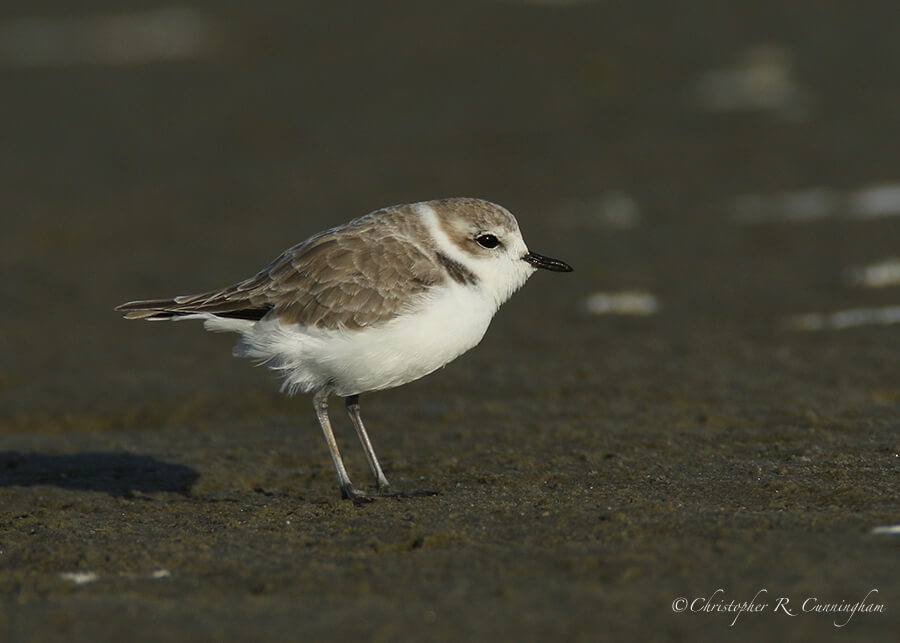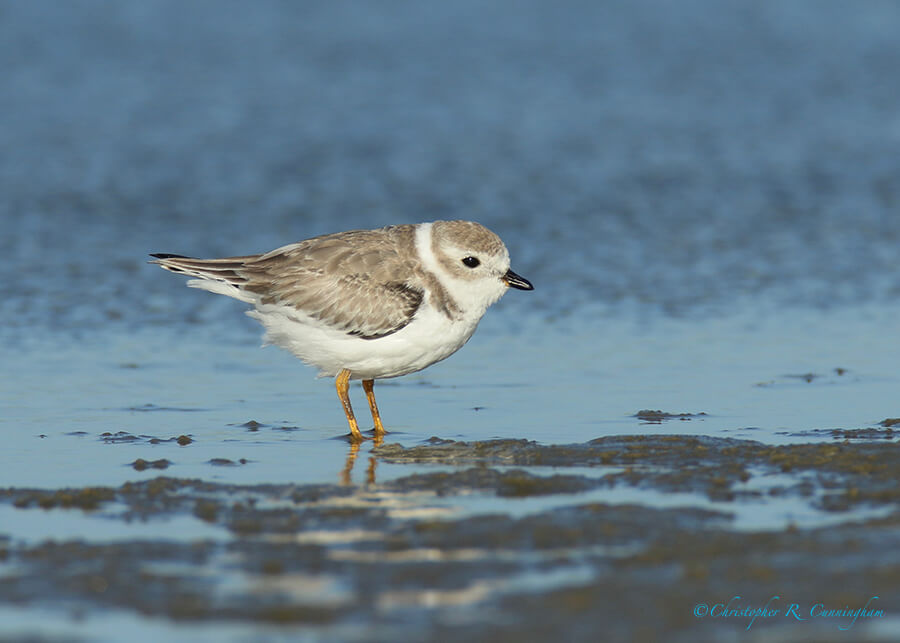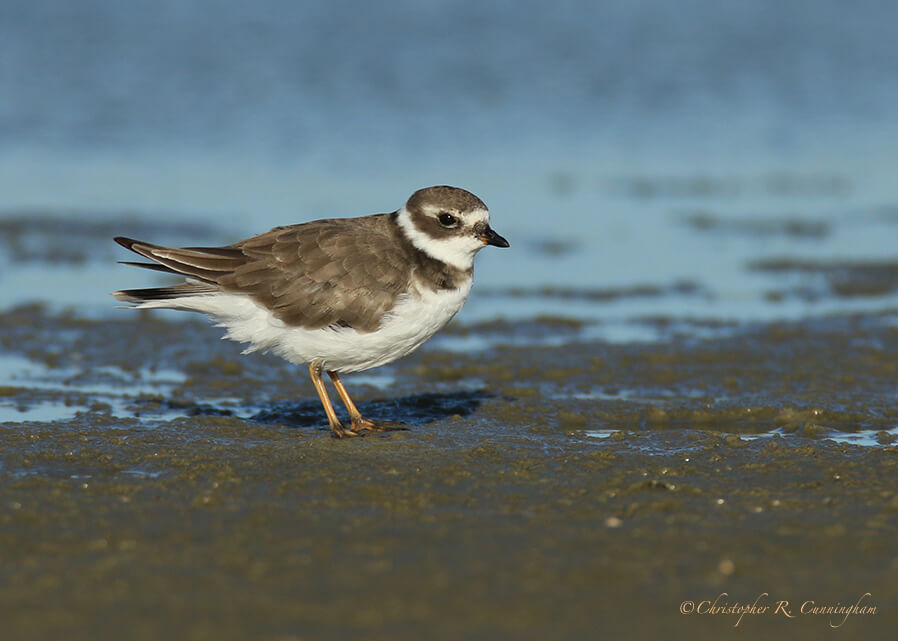You go to Brooklyn, everybody’s got a beard and plaid shirt. They may be able to tell each other apart, but they all look alike to me.–Don Lemon

Last glorious (but-too-windy-for-flash) Sunday we took a trip down to East Beach, Galveston Island looking for shorebirds and found all three species of the smallest Texas plovers in winter plumage.
The Semipalmated Plover breeds in the Arctic and winters along the Pacific, Atlantic, and Gulf Coasts. The Piping Plover has a complicated breeding range, but winters along the southern Atlantic and Gulf Coasts. Some Snowy Plovers reside year-round on the Texas Coast. The upshot of plover biogeography: All three of these cuties can (luckily) be found on the Upper Texas Coast in winter. But telling them apart can be a bit tricky, especially if they’re doing what they’re usually doing–skedaddling along the strand line looking for detritus and tiny infaunal invertebrates. This is termed the “run, pause, and pluck” style of foraging/hunting.

The legs are always the first place I look to identify a small plover. Snowy Plovers always have pinkish gray legs, in breeding and nonbreeding colors. Piping and Semipalmated Plovers have more colorful legs. In nonbreeding, Semipalmated Plovers have more yellowish legs, whereas Piping Plovers tend to have more orangish legs. The overall color palette is usually sufficient to separate Piping and Semipalmated Plovers: Semipalmated Plovers are mostly shades of brown and white and Piping Plovers are mostly shades of gray and white.

Snowy Plovers and Piping Plovers are not common birds—neither, for that matter, are Semipalmated Plovers. The Waterbird Society places a population estimate of around 25,000 for Snowy Plovers. Wikipedia places the number of “near threatened” Piping Plovers at around 6500. Semipalmated Plovers are the “common” small plover on Texas Coast, with an estimated 150,000 individuals worldwide—about as many humans in a smallish city. I wonder what the state of alarm would be if the global human population stood at 6500, 25,000, or even 150,000?
©2016 Christopher R. Cunningham. All rights reserved. No text or images may be duplicated or distributed without permission.